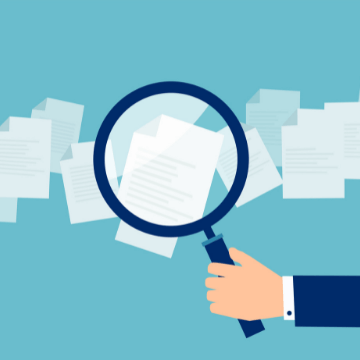
Have you ever wished for a crystal ball that predicts your guest’s behavior?
While not quite a crystal ball, predictive analytics can give your attraction the power to estimate the “when, how, and why” behind your guest’s ticket purchases and spending at your venue.
The magic here is in the data.
Attractions equipped with the right analysis tools can analyze historical data to make predictions about future outcomes.
Our guide on predictive analytics will show you how big data can help you improve your guest experience.
What are predictive analytics models?
Why is predictive analytics important?
What are the best tools for predictive analytics?
How travel and tourism businesses can use predictive analytics
- Personalizing recommendations
- Monitoring customer sentiment on social media
- Optimize pricing and increase revenue
- Improve your marketing campaigns
- Fraud detection and prevention
What is predictive analytics?
Predictive analytics uses a variety of advanced analysis techniques like data mining and modeling, machine learning, and artificial intelligence to predict future outcomes.
An attraction could leverage predictive analytics to identify patterns in guest data — think customer feedback or social media mentions — that can help predict their behavior.
Businesses are increasingly turning to this technology to better understand their customers, design more effective marketing campaigns, and increase their bottom line. In a 2017 report, Dresner Advisory Services found that 23% of businesses surveyed were already using predictive analytics, yet more than half expressed interest in adopting it in the future. Netflix has notably used predictive analytics to influence the majority of the content viewed by its subscribers.
What are predictive analytics models?
Predictive analytics models provide businesses with different approaches to assess historical data and predict future outcomes. The following predictive models are commonly used by businesses of all kinds:
- Classification models: This model places customers into categories based on conclusions from the historical data on their behavior. A classification model can be used to determine that Jane, for example, is likely to purchase a drink package with her cruise ticket. The cruise company will then send targeted promotions to Jane about the drink package, knowing that her past behavior predicts that she’d buy it.
- Clustering models: Data gets sorted into groups based on similar attributes or behaviors. Retail stores often use clustering to group customers based on income, household size, and occupation. After conducting a cluster analysis, a store like Macy’s might find a group of smaller households that spend a lot on clothes. Macy’s then regularly sends promotional emails to this group of high spenders.
- Forecast models: This is used to forecast a numeric value for new data based on historical trends. A theme park could use forecasting to predict how many tickets it’ll sell during peak season. This will give the park an idea of the revenue that will be coming in during its most profitable time of the year.
- Time-series models: Data from a specific period of time is used to predict future outcomes. For example, a museum could use this model to estimate the number of guests who will visit this month based on the number of guests that came over the past few weeks.
Why is predictive analytics important?
The tourism industry is increasingly turning to customer data to improve the guest experience, create relevant marketing campaigns, and make financial forecasts.
Airlines, hotels, and attractions specifically can use predictive analytics tools to better estimate customer demand and increase their bottom line.
Airlines, for example, use it to set ticket prices, just as hotels use it to maximize occupancy and increase revenue per available room. An attraction could similarly analyze ticket sales over some time to predict future visitor numbers.
Point Defiance Zoo & Aquarium in Tacoma, Washington, began using predictive analytics to estimate attendance based on the weather forecast and historical visitor data. One July 4th, the zoo predicted that 100 people would visit. This meant that for the first time, the zoo was confident enough to cut the allocation for part-time staff and build its budget accordingly.
Predictive analysis can help a business make informed decisions that allow it to operate more efficiently.
What are the best tools for predictive analytics?
With so many tools to choose from, you are likely wondering where to start. Many companies want to use predictive analysis to their advantage, yet few have adopted the necessary tools to do so.
As you research the best tool for your company, consider the following:
- Who will be using the tool? This will determine how user-friendly or advanced the tool should be.
- What will you be using predictive analysis for? Determining your imminent and future objectives will help you find the solution to meet all your needs.
- What integrations do you need? Look at the technology you already use to collect guest data and find the software that will best integrate with the tools you already use.
How travel and tourism businesses can use predictive analytics
Big data is transforming the way travel companies interact with their customers. Here’s how.
Personalizing recommendations
A guest that just purchased a first-class flight ticket will likely be interested in luxury hotels — and companies like Expedia are using predictive analysis to offer them just that.
Personalized recommendations make it easier to upsell and cross-sell services to travelers because you’re presenting them with options that fit their preferences.
For instance, the guest who purchased the first-class ticket is more likely to click on a link to a luxury hotel than one related to a budget hostel. Similarly, a guest who’s visiting your attraction with children will be more interested in learning about family-friendly activities than your happy hour schedule.
Predictive analysis allows travel companies to better understand guest behavior and recommend the most relevant product and services for their visit. In turn, these relevant suggestions can drive sales and increase revenue.
Monitoring customer sentiment on social media
The majority of travelers are posting photos, videos, and first-person accounts of their experiences on social media. This creates a large pool of data that can tell your company how guests are feeling about your attraction.
Attractions can use predictive analytics to interpret what guests are posting on social media and identify customer sentiment. The right analysis tools can determine the polarity of these posts as positive, negative, or neutral.
You can also study social media posts to better understand guest preferences and expectations for your attraction, as well as keep tabs on how they’re interacting with your competitors.
Optimize pricing and increase revenue
Fareboom.com leverages predictive analytics in its fare prediction tool, which estimates future prices based on travel trends, demand, airline offers, and special occasions.
Meanwhile, airlines and hotels use it to set ticket and room prices, maximize occupancy, and increase revenue.
Attractions can similarly use predictive analytics to predict guest demand. Your tourism business can make better decisions on ticket prices when it has a solid understanding of its low and peak seasons. This will give you a better grasp on the number of tickets you’re expecting to sell during each.
Improve your marketing campaigns
When you’re aware of when your customers are traveling, what kind of experiences they’re purchasing, and how much they’re spending, the opportunities for personalization are endless.
You can use this data to predict future customer behavior and market your experiences to them accordingly. Predictive analytics allows travel companies to create ads that specifically target a certain kind of guest and therefore have a higher conversion rate. It’s what the Cincinnati Zoo did to attract new guests.
The Ohio attraction surveyed existing customers on their email list about their lifestyle, including questions like how many children they had, and how many cars they owned. Then, the zoo leveraged data analytics to find other potential customers with a similar lifestyle.
They began targeting these new guests with their email marketing and saw a much higher success rate than their previous blanket campaigns.
Fraud detection and prevention
Did you know that the travel and transportation industry is second-most targeted for cybercriminals?
Travelers unknowingly engage in many risky activities when on vacation, such as connecting to public WiFi, charging phones on public USB stations, and carrying devices that contain sensitive information.
Data analytics can help your business protect visitors from online hackers by making it easier to detect online fraud. Artificial intelligence can be used to monitor transactional data and ensure no unexpected patterns occur.
As soon as a red flag pops up, it can be addressed in real-time before it gets out of hand.
***
In conclusion, predictive analytics puts the power of informed decision-making in your hands.
Use this guide to find the best predictive analytics tool for your company and start leveraging big data to improve your guest experience.




